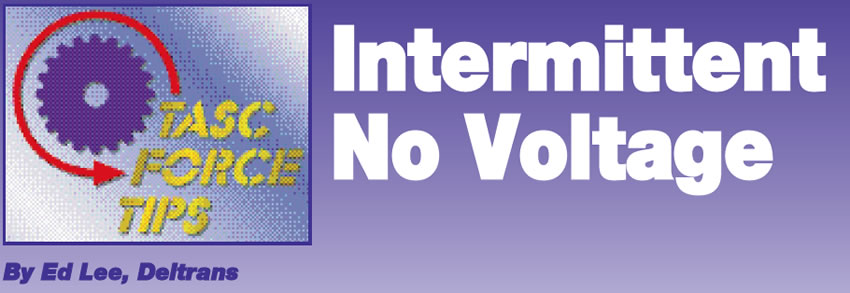Repeat Catastrophic Lube-Related Failures
Most transmission technicians who work on rear-wheel-drive Chryslers are all too familiar with the devastation associated with poor lubrication. Galled governor supports, galled and/or seized output shafts, or rounded sun and planetary gears are all common failures (see Figure 1). Although towing a vehicle with the drive wheels on the ground will yield the same results, the vast majority of failures are caused by a simple lack of or insufficient lubrication.

Troubleshooting One-Way Clutches
There was a time when the only fact that you had to know about a one-way clutch was the direction in which the clutch freewheeled. Today you also must be able to troubleshoot some difficult problems related to one-way clutches.

4L80 E Converter-Clutch Failure in 2000 & Up Vehicles
If you were involved in the transmission industry when the E4OD transmissions began coming to local shops, you probably experienced the nightmare of cracked converter clutches. The primitive code-retrieval methods on the early transmissions were usually little help in finding the root cause of the problem. The aftermarket converter rebuilders recognized the cracks in the converter clutches early on. Some made vain attempts at welding the cracked converter clutches, while most others recommended a factory replacement converter.

4L60-E: 4×4 Low Range Only After Overhaul
Once you are aware that the wire harnesses can be connected incorrectly, it is easy to look back at the problem. When the transfer-case motor-encoder plug is connected to the oxygen sensor, it will short, blowing the fuse; and when the oxygen-sensor plug is connected to the motor-encoder, it shifts the transfer case to 4×4 low range..

E4OD/4R100 Safety Alert
The concern addressed in the bulletin is that the wiring from the overdrive switch may not be routed properly and may come into contact with a steering-column-cover mounting screw and cause a short. This short will blow the #17 fuse.

Necessary Tools
One of the responsibilities of a reputable transmission shop is to prevent problems before they occur. Checking the quality of the parts that are going into the transmission is one way to achieve this. Checking the hardness of the metal parts is an important part of this process.

Code 47/633 in E4OD/4R100
Many technicians are familiar with the problem of early shift scheduling on the 4L80-E transmission. This prob¬lem is caused by a 4×4 low range signal being sent to the computer at an inappropriate time. Vehicles equipped with the E4OD/4R100 transmission may also have this type of problem. A code 47/633 is usually your first clue in identifying this condition. Since Ford uses the same wiring harness in both 4-wheel drive and 2-wheel drive vehicles, you may find code 47/633 in both types of vehicles.

Part II – More 4L30 E Problems (Lots More)
Problems and Fixes for the 4L30 E transmission.

4L30-Es May Drive You Crazy – Part I
If any part of your sanity were ever in question, the 4L30 E transmission might be just the thing to put you over the edge. The most-common complaints concerning the 4L30 E usually have something to do with reverse. No reverse, little or no reverse, neutraling in reverse and partial TCC-lockup apply in reverse are only a few of the many problems.

Centerline 101
The axis or centerline of an engine is the imaginary line around which the rotating mass revolves. The torque converter also has a centerline. Torque-converter rebuilders will tell you how important it is to maintain this centerline and to keep all surfaces perpendicular to this line. Transmissions also have a centerline. Most technicians learn early on the importance of good bushings and good bushing surfaces. Good bushings and their mating surfaces help to maintain a proper centerline to prevent seal and sealing-ring leaks.

Intermittent No Voltage
When a vehicle has been in failsafe or limp mode, it is important to check for codes to see what has caused this condition. If multiple codes are present, check to see whether there is something in common with each one.

Check the Ratio
The wrong differential was installed when the accident repairs were made two years before. The problem never surfaced until the car was driven more than 30 miles at one time. Since this was a second car, it took two years for the problem to show up.

